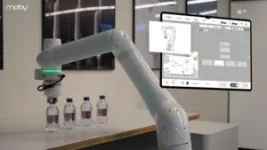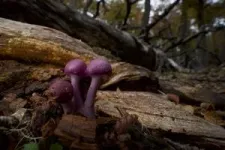(Press-News.org) Reducing carbon emissions from small-scale combustion systems, such as boilers and other industrial equipment, is a key step towards building a more sustainable, carbon-neutral future. Boilers are widely used across various industries for essential processes like heating, steam generation, and power production, making them significant contributors to greenhouse gas emissions.
Boilers are generally quite efficient. As a result, it is difficult to reduce CO2 emissions simply by improving the combustion efficiency. Therefore, researchers are exploring alternative approaches to mitigating the environmental impact of CO2 emissions from boilers. One promising strategy to this end is to capture the CO2 emitted from these systems and convert it into a useful product, such as methane.
To implement this strategy, a specific type of membrane reactor, called the distributor-type membrane reactor (DMR), is needed that can facilitate chemical reactions as well as separate gases. While DMRs are used in certain industries, their application for converting CO2 into methane, especially in small-scale systems like boilers, has remained relatively unexplored.
This research gap was addressed by a group of researchers from Japan and Poland, who were led by Professor Mikihiro Nomura from Shibaura Institute of Technology in Japan and Prof. Grzegorz Brus from AGH University of Science and Technology in Poland. Their findings were published online on 17 April 2024 in Volume 82 of the Journal of CO2 Utilization.
The team conducted a two-pronged approach to the problem through numerical simulations and experimental studies to optimize the reactor designs for efficient conversion of CO2 from small boilers into methane. In their simulation, the team modeled how gases flow and react under different conditions. In turn, this enabled them to minimize the temperature variations, ensuring that energy consumption is optimized while methane production remains dependable.
The team further found that, unlike traditional methods that channel gases into a single location, a distributed feed design could spread the gases out into the reactor instead of sending them in from one place. This, in turn, results in a better distribution of CO2 throughout the membrane, preventing any location from overheating. “This DMR design helped us reduce temperature increments by about 300 degrees compared to the traditional packed bed reactor,” explains Prof. Nomura.
Beyond the distributed feed design, the researchers also explored other factors influencing the reactors efficiency and discovered that one key variable was the CO2 concentration in the mixture. Changing the amount of CO2 in the mixture affected how well the reaction worked. “When the CO2 concentration was around 15%, similar to what comes out of the boilers, the reactor was much better at producing methane. In fact, it could produce about 1.5 times more methane compared to a regular reactor that only had pure CO2 to work with,” highlights Prof. Nomura.
Additionally, the team investigated the impact of reactor size, finding that increasing the size of the reactor facilitated the availability of hydrogen for the reaction. There was, however, a tradeoff to be considered as the benefit of higher hydrogen availability required careful temperature management to avoid overheating.
The study thus presents a promising solution to the problem of tackling a major source of greenhouse gas emissions. By utilizing a DMR, low-concentration CO2 emissions can be successfully converted into usable methane fuel. The benefits gained thereof are not limited to methanation alone but can also be applied to other reactions, making this method a versatile tool for efficient CO2 utilization even for households and small factories.
***
Reference
DOI: https://doi.org/10.1016/j.jcou.2024.102763
About Shibaura Institute of Technology (SIT), Japan
Shibaura Institute of Technology (SIT) is a private university with campuses in Tokyo and Saitama. Since the establishment of its predecessor, Tokyo Higher School of Industry and Commerce, in 1927, it has maintained “learning through practice” as its philosophy in the education of engineers. SIT was the only private science and engineering university selected for the Top Global University Project sponsored by the Ministry of Education, Culture, Sports, Science and Technology and had received support from the ministry for 10 years starting from the 2014 academic year. Its motto, “Nurturing engineers who learn from society and contribute to society,” reflects its mission of fostering scientists and engineers who can contribute to the sustainable growth of the world by exposing their over 9,500 students to culturally diverse environments, where they learn to cope, collaborate, and relate with fellow students from around the world.
Website: https://www.shibaura-it.ac.jp/en/
About Professor Mikihiro Nomura from SIT, Japan
Professor Mikihiro Nomura leads the Separation Systems Engineering Laboratory at Shibaura Institute of Technology, Japan. With a focus on ceramic membrane separation technology, Prof. Nomura aims to advance efficient separation processes for hydrogen, carbon dioxide, and wastewater, contributing to the realization of a carbon-neutral society. Through innovative approaches and a commitment to sustainability, he and his team strive to address pressing environmental challenges with cutting-edge engineering solutions.
Funding Information
This study was supported by the Polish National Agency for Academic Exchange under the Strategic Partnerships Programme, Project No. BPI/PST/2021/1/00023 (project title: Strategic cooperation with Japan in the field of Energy and Environmental Engineering) and partially by the “Excellence Initiative-Research University” program of the AGH University of Krakow, and by JSPS KAKENHI Grant Number JP23K04479.
END
Organisms, including humans, follow a schedule that coordinates important bodily functions such as sleep-wake cycles, metabolism, hormone production, cognitive function, and feeding habits to environmental cycles. While most organisms possess circadian rhythms synchronized with the 24-hour day-night cycle, they have also developed other internal clocks to suit their local environments. Marine animals have evolved circatidal rhythms, aligning activities with the 12.4-hour tidal cycle, complementing circadian rhythms.
Researchers from Chiba University have discovered that snails living in downstream tidal areas have biological ...
New York City, [May 27, 2024] – Researchers at the Icahn School of Medicine at Mount Sinai have made a significant breakthrough in Alzheimer’s disease research by identifying a novel way to potentially slow down or even halt disease progression. The study, which focuses on the role of reactive astrocytes and the plexin-B1 protein in Alzheimer's pathophysiology, provides crucial insights into brain cell communication and opens the door to innovative treatment strategies. It was published in Nature Neuroscience (DOI 10.1038/s41593-024-01664-w) on May 27.
This groundbreaking work is centered ...
Our willingness to help others is governed by a specific brain region pinpointed by researchers in a study of patients with brain damage to that region.
Learning about where in the brain ‘helping’ decisions are made is important for understanding how people might be motivated to tackle large global challenges, such as climate change, infectious disease and international conflict. It is also essential for finding new approaches to treating disorders of social interactions.
The study, ...
Blood, lymph fluid and other biological liquids can have surprising and sometimes troubling properties. Many of these biological solutions are non-Newtonian fluids, a type of liquid that is characterized by a non-linear relationship between stress and strain. Consequently, non-Newtonian fluids don’t necessarily behave as one would expect from a liquid. For example, some of these peculiar fluids deform when touched lightly but will act almost as a solid when a strong force is applied.
And biological ...
It’s important to ensure that care provided at US hospitals that predominantly serve Black and Hispanic populations is as high-quality as the care provided at other US hospitals. New research reveals significant disparities in the delivery of cancer-related care at minority serving hospitals (MSHs) compared with non-MSHs, however. The findings are published by Wiley online in CANCER, a peer-reviewed journal of the American Cancer Society.
For the study, investigators analyzed information from the National Cancer Database (which accrues approximately 70% of US cancer diagnoses) to identify patients eligible for definitive ...
Osaka, Japan - A research team at Osaka University will start an investigator-initiated clinical trial for refractory prostate cancer patients after successful development of a new alpha-ray therapeutic agent ([At-211] PSMA-5) and confirmation of its efficacy in animal models. This will be a world-first in-human clinical trial with [At-211] PSMA-5.
Prostate cancer is on the rise worldwide and is the most commonly diagnosed new cancer in men in Japan. Various treatments are offered for prostate cancer, but the prognosis is very poor when the disease is resistant to standard treatment and associated with multiple metastases.
In ...
Since the launch of ChatGPT 3 in November 2022, we've been abuzz with talk of artificial intelligence: is it an unprecedented opportunity, or will it rob everyone of jobs and creativity? As we debate on social media (and perhaps use ChatGPT almost daily), generative AIs have also entered the arena of university communication. These tools—based on “Large Language Models” that were optimized for interactive communication—can indeed support, expand, and innovate university communication ...
Artificial Intelligence (AI) technology could offer companionship to lonely people amid an international epidemic of loneliness, says a robotics expert.
Tony Prescott, a professor of cognitive robotics at the University of Sheffield, argues in his new book The Psychology of Artificial Intelligence that ‘relationships with AIs could support people’ with forms of social interaction..
Loneliness has been found to seriously impair human health, and Professor Prescott makes a case that advances in AI technology could ...
Published today in the Alcheringa: An Australasian Journal of Palaeontology, evidence of an ‘Age of Monotremes’ has been unearthed by a team of Australian scientists at the Australian Museum (AM), Museums Victoria and Australian Opal Centre.
The findings were led by two renowned mammalogists, Honorary Associate of the Australian Museum, Professor Tim Flannery; and Professor Kris Helgen, Chief Scientist and Director of the Australian Museum Research Institute (AMRI).
Found in the Lightning Ridge opal fields, NSW, the opalised jaws ...
The SELECT Trial has revealed the potential of semaglutide, a glucagon-like peptide-1 (GLP-1) receptor agonist, in combating kidney function decline among individuals with overweight or obesity and established cardiovascular disease but without diabetes.1
Unveiling the results today at the 61st ERA Congress, researchers presented the impressive secondary analysis from the SELECT (Semaglutide Effects on Heart Disease and Stroke in Patients with Overweight or Obesity) trial, a randomised trial comprising a participant pool of 17,604 individuals.
Experts believe the study’s results offer hope for those affected by obesity, a condition known ...







